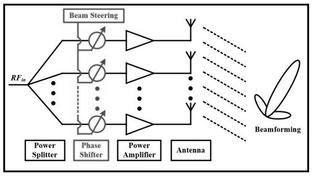ARSR vs ASR: Airport Surveillance Radars Explained
Advertisement
This page compares ARSR (Air Route Surveillance Radar) vs ASR (Airport Surveillance Radar) and highlights the differences between them. These airport radars are essential for air traffic control both at airports and along air traffic routes.
The increasing volume of air traffic has made Air Traffic Control at Airports, especially during takeoff and landing, as well as along air routes, increasingly challenging. High-resolution radars are used to monitor aircraft, passengers, and ground vehicular traffic at larger airports, ensuring safety.
ASR radar manages air traffic control in the immediate vicinity of the airport. ARSR radar handles air traffic control along air routes.
ARSR vs ASR Radar - Difference Between ARSR and ASR Radar
The following table outlines the key differences between Air Traffic Control Radars, specifically ARSR and ASR radar.
| ATC Radar specifications | ARSR radar | ASR radar |
|---|---|---|
| Frequency of operation | L Band (1250 to 1350 MHz) | S Band (2700 to 2900 MHz) |
| Coverage Range | 370 Km | 111 Km |
| Peak Power | 5 MWatt | 1.4 MWatt |
| Pulse width | 2 | 1.6 |
| PRF (Pulse Repetition Frequency) | 310 to 365 Hz | 700 to 1200 Hz, 1040 (Average) |
| Average power | 3.6 KWatt | 0.875 KWatt |
| Noise Figure | 4dB | 4dB |
| Antenna Size | 12.8 m X 6.9 m | 4.9 m X 2.7 m |
| Horizontal Beamwidth | 1.25 Degree | 1.35 Degree |
| Vertical Coverage | 40 degree | 30 degree |
| Antenna Gain | 34 dB | 30 dB |
| Polarization | Horizontal, vertical, circular | vertical, Circular |
| Antenna rotation rate | 5 RPM | 12.8 RPM |
| MTI improvement parts | 39 dB | 34 dB |
| Blind Speed | 1200Knots | 800Knots |
Advertisement
 RF
RF


